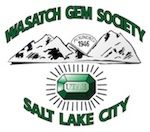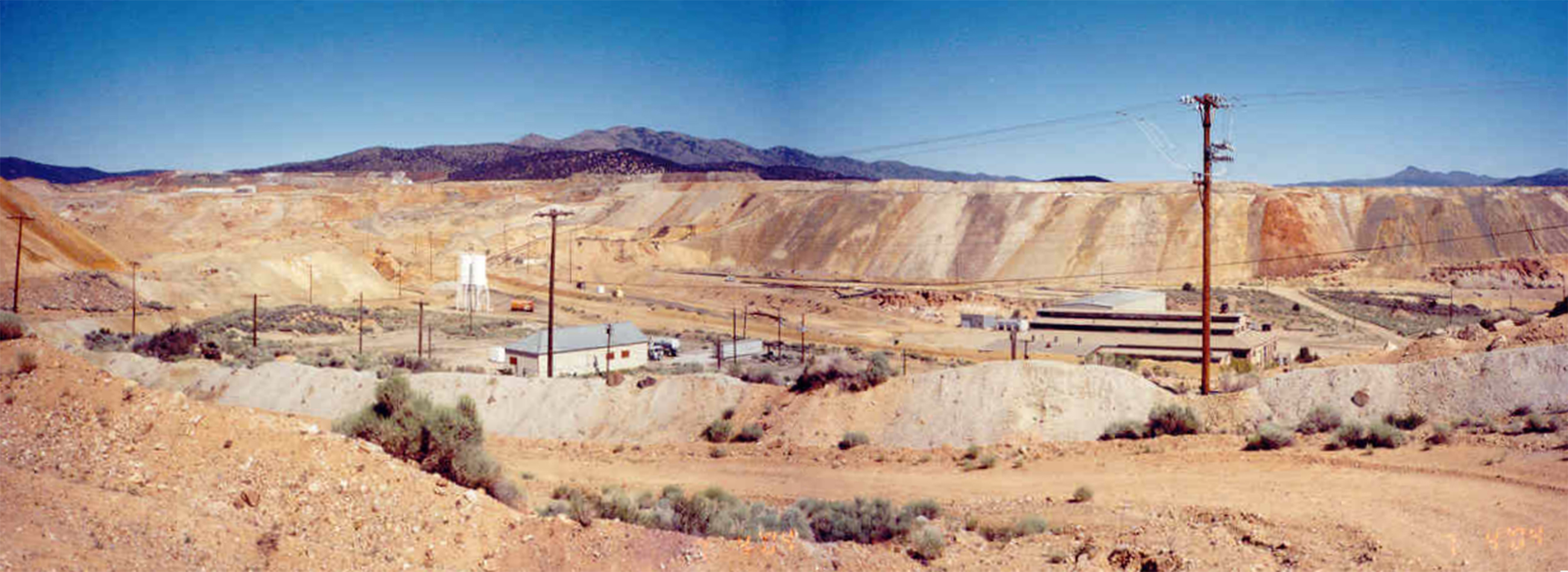in the Manti-La Sal National Forest, Utah County
Geologic Information: Approximately 58 to 66 million years ago (Paleocene epoch), a large body of water known as Lake Flagstaff covered parts of northeastern and central Utah. This lake deposited a sequence of sediments that formed rocks known as the Flagstaff Formation.
Although these rocks are technically a limestone, the building stone industry has termed this deposit a "marble." The rocks are rich in algal ball structures commonly known as "birdseyes." These birdseye features were formed by algae that grew around snail shells, twigs, or other debris. The algae used these objects as a nucleus, forming into unusual, elongated, concentric shapes.
How to get there: From Salt Lake City take I-15 south approximately 50 miles to Spanish Fork (exit 261). Travel east and proceed up Spanish Fork Canyon (Rte 6) for about 13.5 miles to Hwy 89. Make a right onto Hwy 89 and go south about 5.8 miles until you see a gravel road to your left. At the entrance to the gravel road, a sign is posted for the Birdseye Marble Quarry, which is under claim and closed to all collecting. Don't let this discourage you because the Birdseye Marble Quarry is not part of our collecting area. Turn left at the gravel road and proceed until you reach a gate. This gate marks the beginning of Forest Service Road 126. Before you proceed up the road, remember to close the gate after yourself. Continue up this road for about 1.5 miles until you see a sign indicating that you have crossed into the Forest Service lands.
Where to collect: Specimens can be found along the road just after crossing the Forest Service boundary. Some of the birdseye marble contains cores of snail fossils, which have been replaced by the mineral calcite. This material takes a great polish and is ideal for making unusual decorative bookends.
Useful maps: Nephi 1:100,000-scale topographic map; Birdseye 1:24,000-scale topographic map; Manti-La Sal Forest Service map covering the Sanpete, Ferron, and Price ranger districts; and a Utah highway map. Topographic and Forest Service maps can be obtained from the Natural Resources Map & Bookstore, 1594 W. North Temple, Salt Lake City, UT, (801) 537-3320 (or 1-800-UTAH-MAP).
Land ownership: Manti-La Sal National Forest.
Forest Service collecting rules: Rock, mineral, and fossil collecting on lands managed by the U.S. Forest Service generally requires a permit. However, small amounts of material for personal use, such as 2 to 3 pieces, can be collected without a permit. If you fall in the category of needing a permit, it can be obtained at the Manti-La Sal National Forest office, Monday through Friday from 8:00 a.m. to 4:30 p.m. at 599 West Price River Drive, Price, UT, (435) 637-2817 or (435) 637-3521.
Miscellaneous: Remember to bring plenty of water and a first aid kit in case of emergencies. The usual rockhounding tools are needed: gloves, hammer, wrapping paper, and safety glasses. Most importantly, be patient and have fun!
Author:Carl Ege
Taken from: geology.utah.gov




